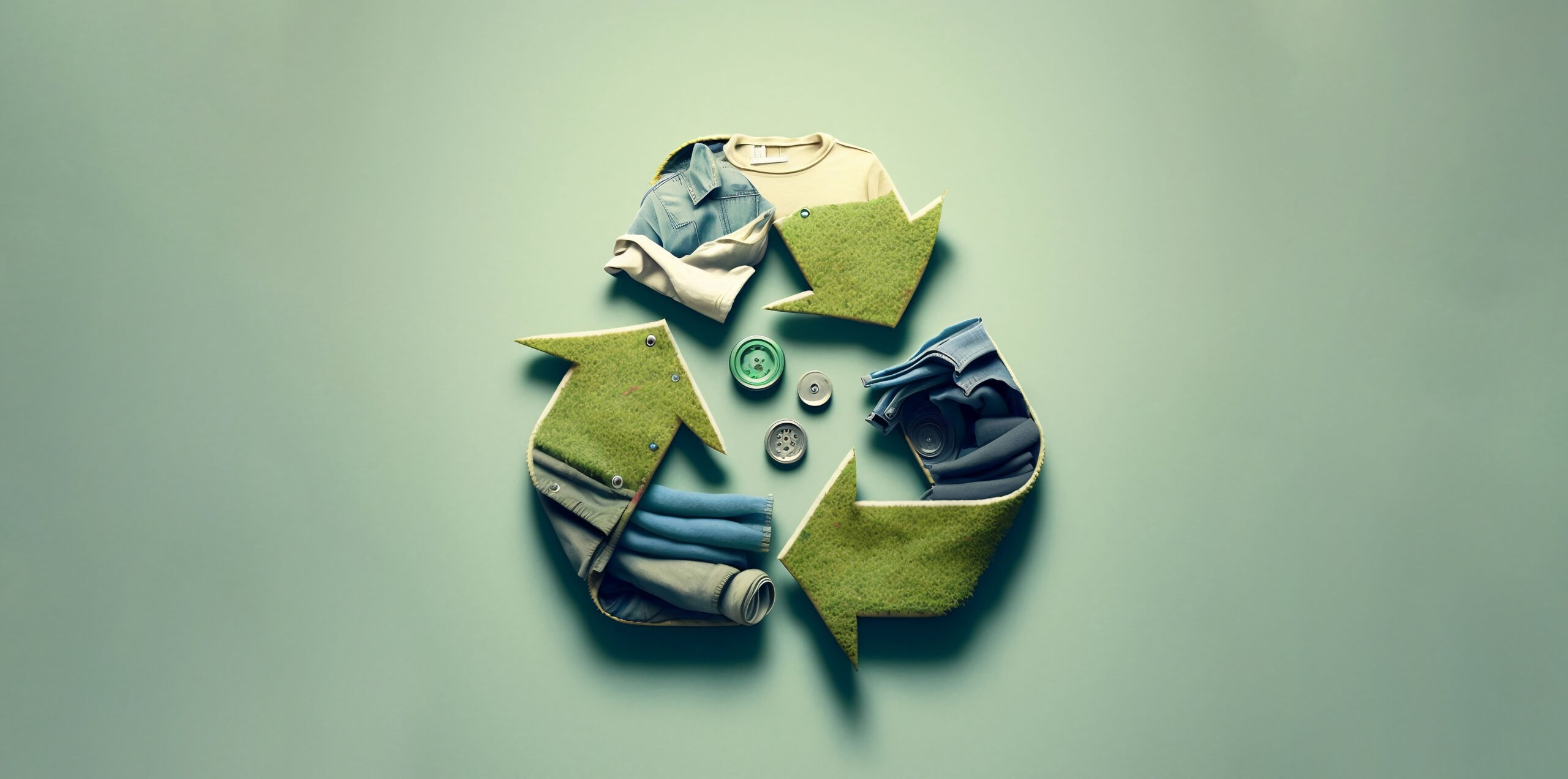The Long Term of Cape Town Sustainable Fashion in the Global Market
The Long Term of Cape Town Sustainable Fashion in the Global Market
Blog Article
Stay Ahead of the Contour by Checking Out Ingenious Fashion Fads
In an industry as dynamic as style, staying in advance involves greater than just adhering to existing fads-- it requires an expedition of technology. Smart textiles, as an example, are transforming garments into practical masterpieces, while 3D printing is reinventing layout processes with its customizable, waste-reducing capacities. As sustainability comes to be a keystone, developments like environmentally friendly materials and circular fashion techniques are reshaping environmental duty - Cape Town Sustainable Fashion. Moreover, the merging of technology and fashion proclaims a brand-new age of consumer involvement. How, then, can these emerging fads redefine the future of fashion, and what effects do they hold for brand names seeking to thrive in this progressing landscape?

Accepting Smart Textiles
In the last few years, the garment industry has observed a transformative change with the combination of clever textiles, a sophisticated technology that mixes technology with textile. This evolution represents not just a fusion of visual appeals and capability however likewise a substantial jump in the direction of sustainability and personalization in style. Smart textiles, additionally called e-textiles, installed innovative electronics such as sensing units and conductive strings within the textile, making it possible for garments to communicate with the atmosphere or the wearer.
These fabrics are created to keep track of physical parameters, such as heart rate or body temperature, giving real-time health analytics. Beyond health applications, wise textiles are also being made use of for adaptive clothing, which can transform color or pattern in response to ecological stimulations, thus using a dynamic fashion experience.
Furthermore, the development of energy-harvesting fabrics that produce power from activity or sunshine is leading the way for self-dependent wearable modern technology. This development is appealing to environmentally mindful consumers and developers aiming to lower the eco-friendly footprint of fashion. As r & d in this field development, clever textiles are anticipated to become significantly widespread, improving the landscape of modern fashion with their multifunctional capabilities.
The Surge of 3D Printing
Changing the manufacturing landscape, 3D printing has actually emerged as a game-changer in the fashion business. This cutting-edge technology has actually allowed developers to press the boundaries of imagination, producing complex and personalized garments that were previously inconceivable. By leveraging electronic style and additive manufacturing, 3D printing facilitates the production of intricate geometries and patterns, allowing developers to try out brand-new textures and frameworks.
A remarkable benefit of 3D printing in fashion is its capacity to create on-demand, decreasing waste and reducing inventory demands. This effectiveness not just optimizes production processes yet additionally enables quick prototyping, allowing designers to bring their visions to life in a shorter timeframe. In addition, 3D printing supports modification to a degree unrivaled by traditional approaches, using unique designs and individualized fits customized to private customer preferences.
The increase of 3D printing has actually additionally equalized style, making it obtainable to arising developers that can currently make top notch pieces without considerable economic investment in typical production facilities. As innovation remains to advancement, the style industry is poised to harness the full capacity of 3D printing, checking out new products and strategies that will most certainly redefine just how style is conceived and generated.
Lasting Style Advancements
As the apparel industry grapples with journalism demand for environmental obligation, lasting style developments have actually arised at the leading edge of transformative adjustment. The expanding recognition of environmental impact has sustained a shift towards more eco-conscious practices and products. Brands and developers are currently prioritizing sustainability, integrating techniques that minimize waste and minimize carbon footprints.
One significant advancement is the surge of circular style, which highlights recycling and upcycling to extend the lifecycle of garments. This method not only decreases waste yet additionally urges customers to adopt a more mindful approach to clothing intake. Additionally, making use of sustainable products, such as organic cotton, hemp, and recycled polyester, has actually acquired grip. These materials call for less water and power throughout production, significantly lessening ecological influence.
Another innovation depends on the fostering of ingenious look at here now dyeing techniques that use all-natural dyes or waterless processes, consequently reducing the huge amounts of water and chemicals typically utilized in fabric dyeing. Additionally, innovations in biotechnology have brought about the creation of lab-grown leather and fabrics, supplying eco friendly and cruelty-free options to traditional materials. Via these pioneering efforts, the fashion business is making significant strides towards a much more sustainable future.

Tech-Integrated Apparel
Tech-integrated garments represents a revolutionary fusion of style and innovation, improving just how people connect with their garments. This ingenious domain name is noted by the incorporation of wise textiles and embedded electronic elements, enhancing both functionality and aesthetic appeal. From physical fitness trackers installed in sports apparel to heated coats controlled through smart device apps, tech-integrated garments supplies customers unprecedented ease and versatility.
Pioneering brands get more are driving this trend, concentrating on creating garments that react to environmental stimuli or individual commands. For example, some garments can change color or pattern in response to temperature shifts, while others integrate biometric sensing units to keep an eye on wellness metrics like heart price or anxiety levels. The seamless integration of modern technology right into fabrics additionally encompasses ecological sustainability, with initiatives to create self-cleaning fabrics or garments that adjust to weather problems, hence decreasing the need for several layers.
Moreover, the advent of wearable modern technology is not just restricted to clothes yet extends to devices like watches and glasses, more widening the extent of tech-integrated fashion. As the industry continues to innovate, the potential for personalization and customization in clothing grows, supplying customers special, tech-enhanced style experiences that provide to their private needs and preferences.
Future of Virtual Style
In the last few years, the future of online style has actually emerged as a transformative force within the sector, leveraging improvements in digital modern technology to redefine exactly how style is developed, experienced, and eaten. By incorporating enhanced fact (AR), virtual truth (VR), and 3D layout devices, developers can currently craft immersive and interactive experiences that go beyond conventional style limits. Digital style permits for the creation of garments that exist exclusively in digital atmospheres, supplying endless opportunities for technology without the limitations of physical manufacturing.
This electronic shift not just presents possibilities for imaginative expression however likewise addresses sustainability problems fundamental in conventional style techniques. Cape Town Sustainable Fashion. By getting rid of the demand for physical sources, digital style reduces waste and decreases carbon impacts. Additionally, the increase of online fashion straightens with the raising consumer demand for one-of-a-kind and personalized experiences, as online garments can be customized and customized to specific choices with convenience

Final Thought
The fashion business's future depend on the integration of cutting-edge innovations and sustainable methods - Cape Town Sustainable Fashion. Smart textiles and tech-integrated garments are improving capability, while 3D printing uses opportunities for personalization and waste reduction. Sustainable style, via eco-friendly materials and round strategies, demonstrates a dedication to environmental stewardship. Moreover, virtual fashion is positioned to redefine consumer interactions. Adjusting to these patterns is essential for brands seeking to continue to be affordable and pertinent in this quickly developing landscape.
In recent years, the fashion sector has experienced a transformative shift with the integration of wise fabrics, an innovative advancement that mixes innovation with material.As the style sector grapples with the pressing demand for environmental obligation, sustainable style developments have arised at the center of transformative additional info modification.In current years, the future of digital style has arised as a transformative pressure within the industry, leveraging advancements in electronic innovation to redefine exactly how fashion is created, experienced, and taken in. The surge of online fashion lines up with the increasing consumer need for customized and unique experiences, as online garments can be customized and tailored to specific preferences with ease.
The fashion market's future lies in the integration of cutting-edge technologies and lasting practices.
Report this page